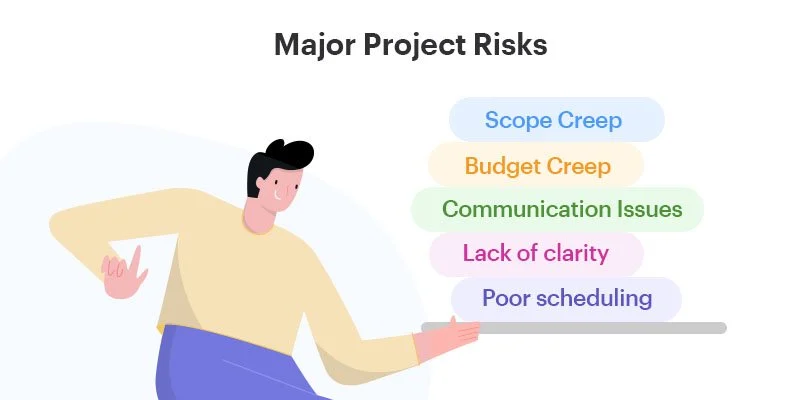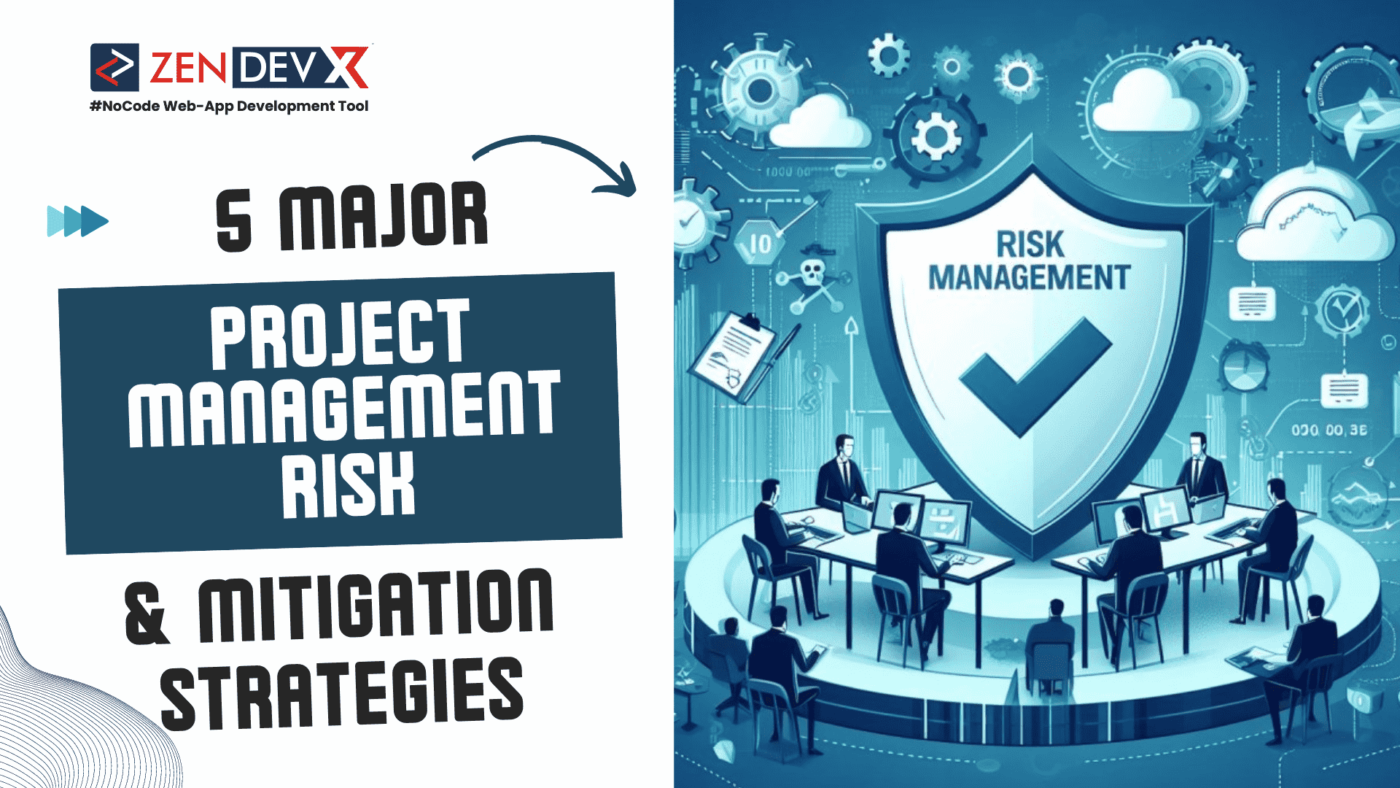What is Project Risk?
A challenge that might or might not surface throughout your project management is project risk. Although all possible hazards cannot be controlled, considering them ahead of time will help your project to avoid failure. It can either help or hurt the project.
In Project Management, What is Risk Assessment?
Risk assessment—also known as risk identification—is the recognition that something potentially go wrong. You list hazards and go over ways to reduce them in a risk assessment. Many if not all of the members of your project team should be involved in risk assessment. Call a meeting and then ask each team member separately for advice on the hazards you should take into account.
Five Main Hazards in Project Management and Their Handling
Although you cannot completely remove all the hazards from your project, giving jobs top priority and ensuring your staff is ready for the most likely challenges can help you solve issues faster and get back on track toward effective project completion. A good risk-reducing strategy will help to ensure that the project does not collapse.

In project management, the following are some typical kinds of hazards together with ways to reduce them:
1. Scope Creep
It refers to either:
- From the start, the project’s parameters were not clearly specified either internally from the project team or externally from clients or superiors, creating pressure either inside the project team or outside from activities not included in the initial project plan.
Often excellent intentions lead to scope creep. Either someone in high management wants to go above and wow the client, or your client has a great fresh insight or a team member dreams of an amazing feature to add. Little changes taken here and there might add up to hours (or days or weeks) of extra labor.
The issue with scope creep is that it usually helps a project fail. You haven’t planned the time or money required to finish the additional chores, hence what could have been a spectacular success turns out to be a miserable failure.
Strategies for handling it:
Make sure your customer understands exactly what they need and has included all the specifics in a documented request to stop scope creep. For your client, create a project charter outlining what your staff will produce and when, then include a section outlining what would happen should the client extend the approved scope.
Depending on the request, it could be feasible to allow some scope creep; but, be sure your client understands that any additions will affect the project’s cost or schedule.
2. Budget Creep
Budget creep is tightly tied to scope creep. Changes in project scope will undoubtedly have a negative impact on your bottom line, but other elements can also have such an effect. When you understate the time or outside resources needed to finish the project, too optimistic cost projections might lead to a budget overrun.
Occasionally, material or labor costs change unexpectedly. We’ll discuss those below; poor preparation almost always influences your budget; likewise, poor communication.
Strategies for handling it:
As the project manager, certain budgetary adjustments are beyond your influence but not all. Research extremely carefully to help reduce budget-related hazards; avoid presenting a final budget until your project plan and schedule are set.
Establishing openness about your project can also help to avoid budget overruns; if team members have access to pertinent data, both the client and team members can contribute to keep the project under control.
3. Transmission Problems in Communication
Like in reality, effective project management depends mostly on communication, hence poor communication results in a great and pointless risk. At the beginning of your project, show your staff your preferred project collaboration tools and explain them.
Most teams make use of some mix of email, text messaging, a chat tool, and/or Google integrated apps. Make sure every team member can use the technology you have chosen as the project manager. Beyond the means of communication, be explicit with expectations for response times and establish a strong example of professional communication style and tone.
Strategies for handling it:
Simplifying your project communication channels to the minimal amount that will enable your team to remain effective helps you to control communication hazards. Find out which tools for cooperation and communication will best benefit the project you oversee as well as the people involved. You could also have to mentor some team members toward improved communication ability.
4. Lack of Clarity
Inaccurate requirements resulting from poor client and stakeholder communication might add still another risk. As you must build strong communication with your team, you also have to do so with your customer and other stakeholders so that project needs are obvious from beginning to end.
Most people have had the regrettable experience of devoting a lot of time to a project only to discover they misinterpreted what was expected.
Strategies for handling it:
Excellent listening techniques help to reduce this risk greatly. It is your responsibility as the project manager to ask the client what they require and to pay close attention to all the project participants since they offer opinions. As many inquiries as it takes will help you to clearly understand the intended final product and its uses.
Request hard data—that is, numbers—but also ask for anecdotes about what success for the end user looks like. A clear, common vision helps the team stay free from issues and inspire them.
5. Ineffective Planning
Effective project management depends mostly on project scheduling; however, inadequate scheduling might expose a lot of hazards to your project. Scheduling is compiling a document—typically a digital one these days—that outlines the project schedule and the organizational tools needed to do every chore.
Every team member has to be able to access the project calendar. Its goal is to provide the team with important information, hence it has to be thorough and clear-cut. There are eight steps to project scheduling, and even if it might be time-consuming, appropriate project scheduling software will help you prevent many of the hazards that would otherwise develop in your project.


